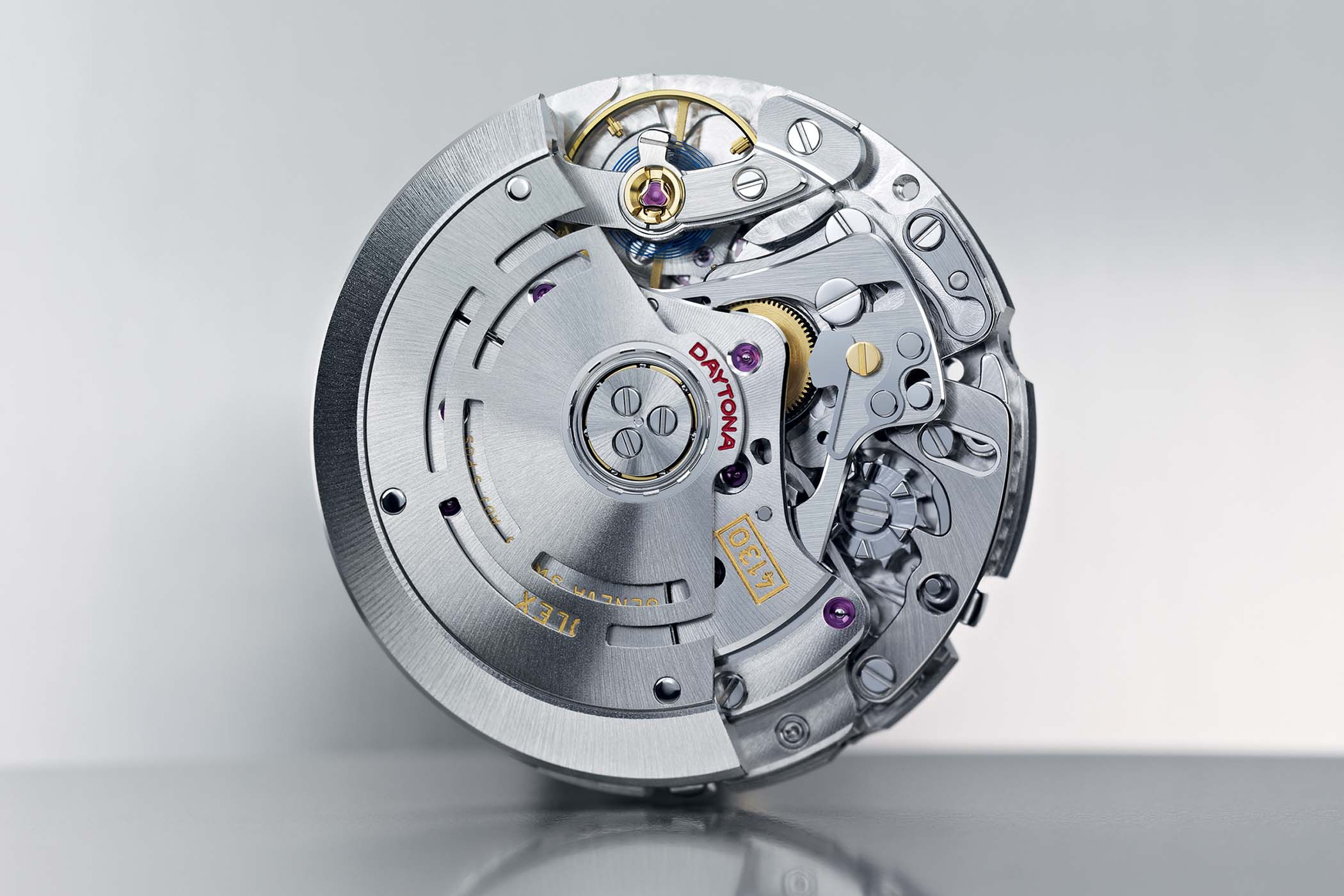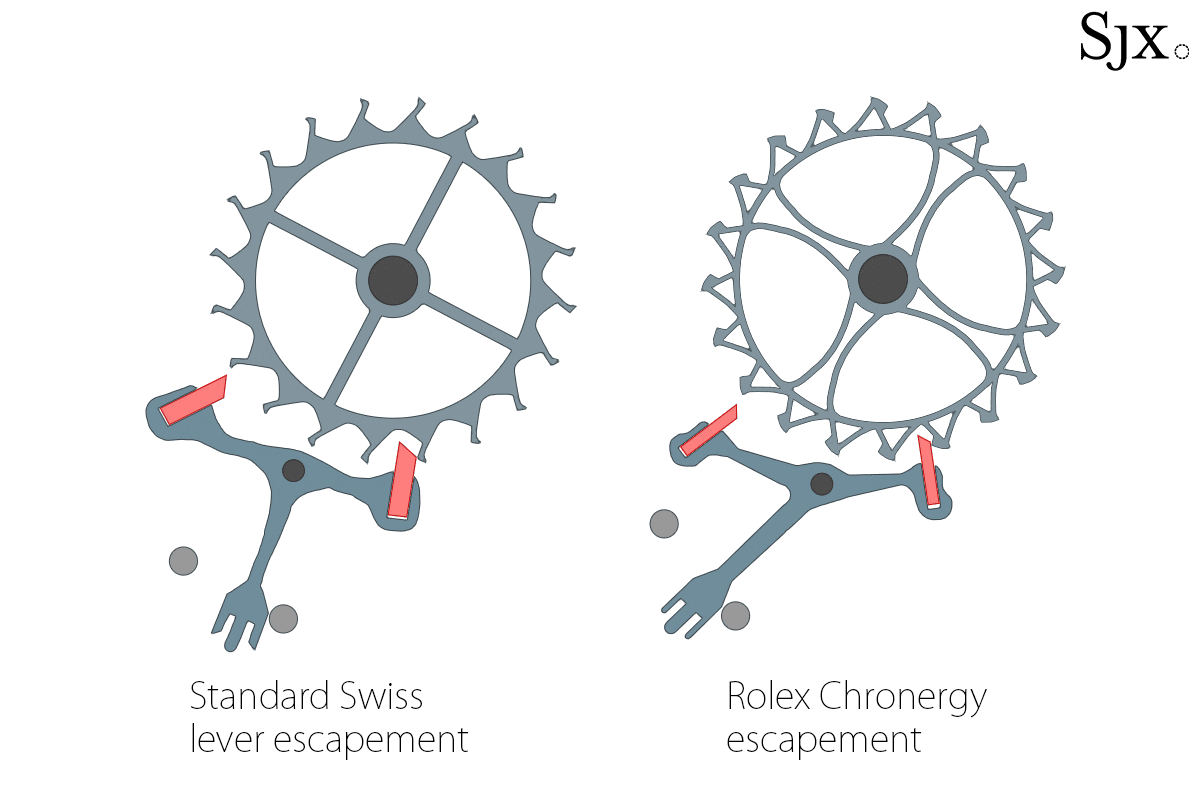Being a resident of Geneva and a lifelong tech enthusiast, I find it fascinating to be around two of the biggest technology companies in the world, CERN and Rolex.
Rolex has been at the forefront of precision timekeeping for more than a century, much like the groundbreaking particle physics research currently underway at CERN is pushing scientific boundaries.
According to my own research and observations, Rolex releases are prime examples of both high-tech innovation and traditional mechanical craftsmanship, a powerful combination that puts Rolex watches in a class apart in terms of accuracy, dependability, and prestige.
Below, I explain why Rolex watches perform so well, establishing them as a standard of precision and a marvel of technological innovation in horology and beyond.

Timekeeping Precision
The primary function of any watch is to keep accurate time. In mechanical watches, precision timekeeping is primarily dependent on two mechanisms: the oscillator and the escapement.
The oscillator in a watch regulates the timing pulses, while the escapement transfers the oscillator's energy to the gear train, which then drives the display hands on the watch face to indicate the time (Beckett, 2014).
The oscillator in a Rolex watch is made up of a balance wheel and a spiral hairspring. The hairspring determines the balance wheel's natural oscillation frequency, which provides the beat timing for the movement. The oscillator's timekeeping stability can be optimised through careful adjustment and fine tuning of parameters such as the balance wheel's moment of inertia and the mechanical properties of the hairspring. This regulates the minute fluctuations in accuracy that occur over time (Carter, 2013).

Rolex's introduction of the paramagnetic blue parachrom hairspring in 2000 significantly improved reliability over temperature variations and shocks, increasing precision by tenfold. Rolex's patented new hairsprings made of a niobium-zirconium alloy have improved isochronism performance by 20 to 30 percent, ensuring precision consistency over the entire power reserve duration of the watch (Rolex 2018 Annual Report).
Maintaining a stable oscillator frequency alone does not guarantee high precision timekeeping; that frequency must also be accurately transmitted to the watch display via the gear train. In a Rolex watch, this function is performed by the escapement, which consists of the pallet fork, escape wheel, and anchor. Rolex has achieved a high degree of precision and efficiency in releasing each timekeeping pulse from the oscillator through subtle changes to gear tooth profile design and contact interfaces over decades of development. Their escapement mechanisms are outstanding due to their low friction, wear, and energy loss (Reinhard, 2014).

Environmental Stress Resistance
Precise timekeeping under normal conditions does not confer Rolex watches with their reputation for technical excellence; maintaining that precision in the face of extremes in temperature, humidity, shocks, and other stresses reflects Rolex's capabilities in research and engineering.
As previously stated, minimising the effects of temperature variation has been a driving force behind innovations such as the Parachrom hairspring, which uses temperature compensated alloys. In the event of shocks from drops and other impacts, the trademarked Paraflex shock absorbers improve precision by up to 50 times. High performance Lubricinium lubricants for movement based on synthesised hydrocarbons increase reliability and wounding efficiency. The Oyster cases are water resistant up to 100m thanks to the Triplock triple waterproofness system. Rolex even has its own ISO testing centres to simulate years of wear under normal to harsh conditions in a matter of days or weeks, during which precision is constantly measured, resulting in only certified chronometers being produced (Robinson, 2012).
State-of-the-Art Technology
Mastering the dual domains of traditional mechanical watchmaking art and incorporating cutting-edge technological advances allows Rolex to achieve unparalleled precision and reliability in its timepieces.
Transforming Energy Systems
A significant advancement has been the incorporation of miniaturised rechargeable microelectromechanical systems (MEMS) that harvest and store energy at much higher densities than traditional winding mechanisms. These nanotechnology-enabled batteries, seamlessly integrated within existing mechanical subsystems, enable continuous operation without regard for power output or winding capacity constraints. The synergistic combination of traditional non-electronic watchmaking and digitally integrated power systems gives Rolex movements the capabilities of electronic watches while retaining the intricacy and allure of mechanical engineering (Darmwal 2022).
Advanced Optimisation of Self-Regulating Movements
Rolex has created self-calibrating movements that dynamically optimise internal friction, torque, and tension parameters in response to environmental fluctuations using cutting-edge regulation systems theory principles. Machine learning supervision combined with evolutionary search algorithms can autonomously explore configurations to achieve maximum accuracy and minimal variance in timekeeping. This procedure is similar to the manual regulation procedure used by watchmakers, but it is carried out at electronic speeds, testing thousands of parameter settings. Analytical optimisation improves calibres more quickly and precisely than traditional methods, achieving new levels of dependability.
Exploring the Quantum Scale
Rolex is actively investigating how quantum physics phenomena can be used to rewrite the rules of timekeeping. One approach focuses on manipulated ionised atoms trapped using electromagnetic confinement and laser cooling to near absolute zero temperatures to generate extremely uniform atomic vibration frequencies (Miller 2021). According to quantum locking models, such nanoscale oscillators coupled as dedicated references to conventional quartz crystals could significantly improve accuracy. Rolex has the potential to set new precision standards by combining mechanical systems with quantum-governed time bases.
Additive Nanomanufacturing
Beyond traditional machining processes, Rolex employs cutting-edge additive nanomanufacturing techniques such as multi-material 3D printing, holographic lithography, and scanning helium ion beams to produce structures as small as 10 nanometers (Sebastian 2022) - fractions of what is possible through traditional methods. Such dimensional control enables the design of previously unmanufacturable components and tweaks that theory and simulations predict can improve performance. Rolex's next-generation watchmaking is propelled forward by unrestricted design freedom enabled by additive techniques.
Vertical Integration as a Strategic Advantage
The organisational decision to pursue strict vertical integration, owning the entire supply chain from basic materials to proprietary machining equipment to in-house R&D and watch distribution itself, is what truly enables Rolex to successfully incorporate such multi-disciplinary expertise ranging from quantum science to 3D printing. This consolidation enables information flow, quality assurance, and rapid iteration, which are difficult to achieve in fragmented production systems. Vertically integrated and emphasising self-reliance over offshored outsourcing, Rolex retains the flexibility to rapidly materialise theoretical advances into commercial products, sustaining its technological leadership in the luxury watch industry decade after decade.
Conclusion
In conclusion, Rolex watches exemplify mechanical technology and craftsmanship perfected over more than a century while continually transitioning into a high science intensive enterprise befitting their position as the apex predator at the forefront of global horology. Their focused innovation process, informed by a deep engineering culture, has resulted in an unrivalled pedigree and portfolio of high precision timekeeping mechanisms of diverse designs that push the boundaries of what is physically possible.
Each Rolex certified chronometer that leaves their factory represents this unwavering pursuit of scientific progress applied to a fundamental human need - timekeeping. Their technical prowess, as reflected in the dependability of accurate time measurement even in the most adverse of conditions, is a testament to both their history and vision at the unique intersection of tradition and modernity that few other brands occupy anywhere in the world across diverse industries, making Rolex watches true technological marvels.